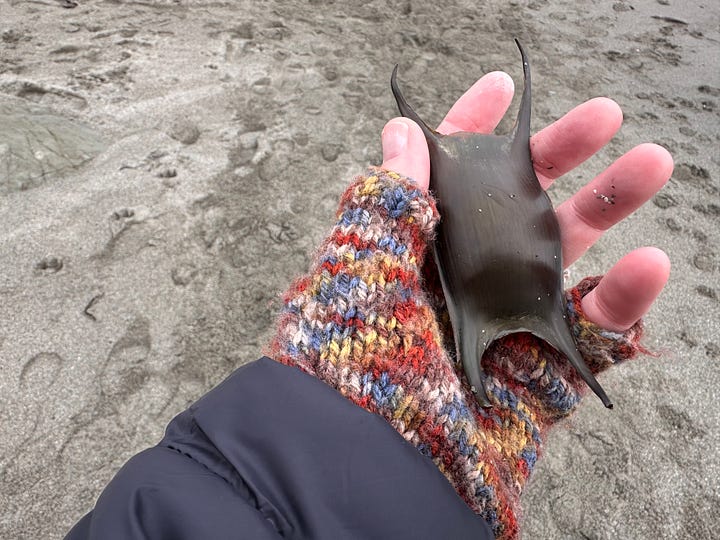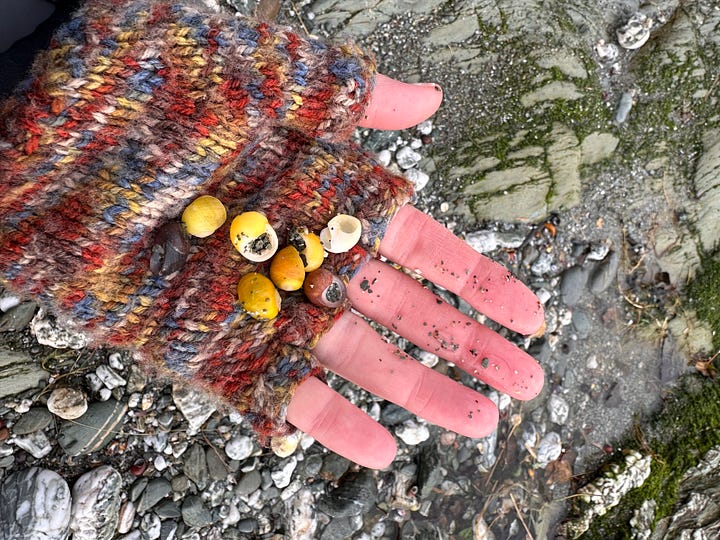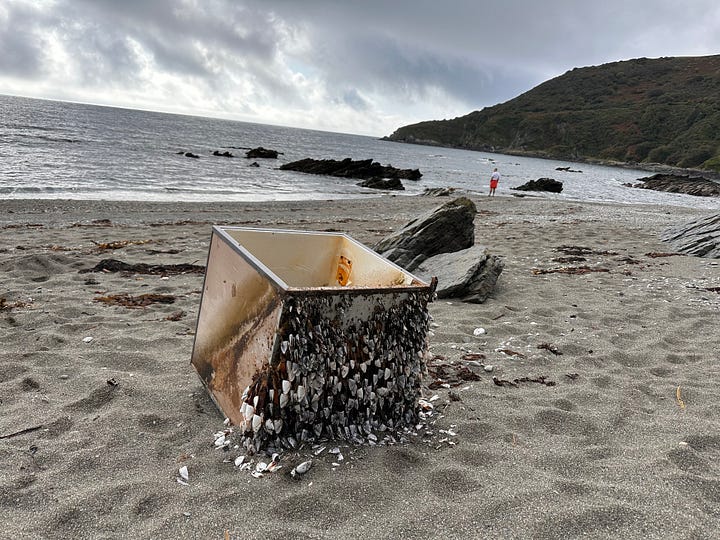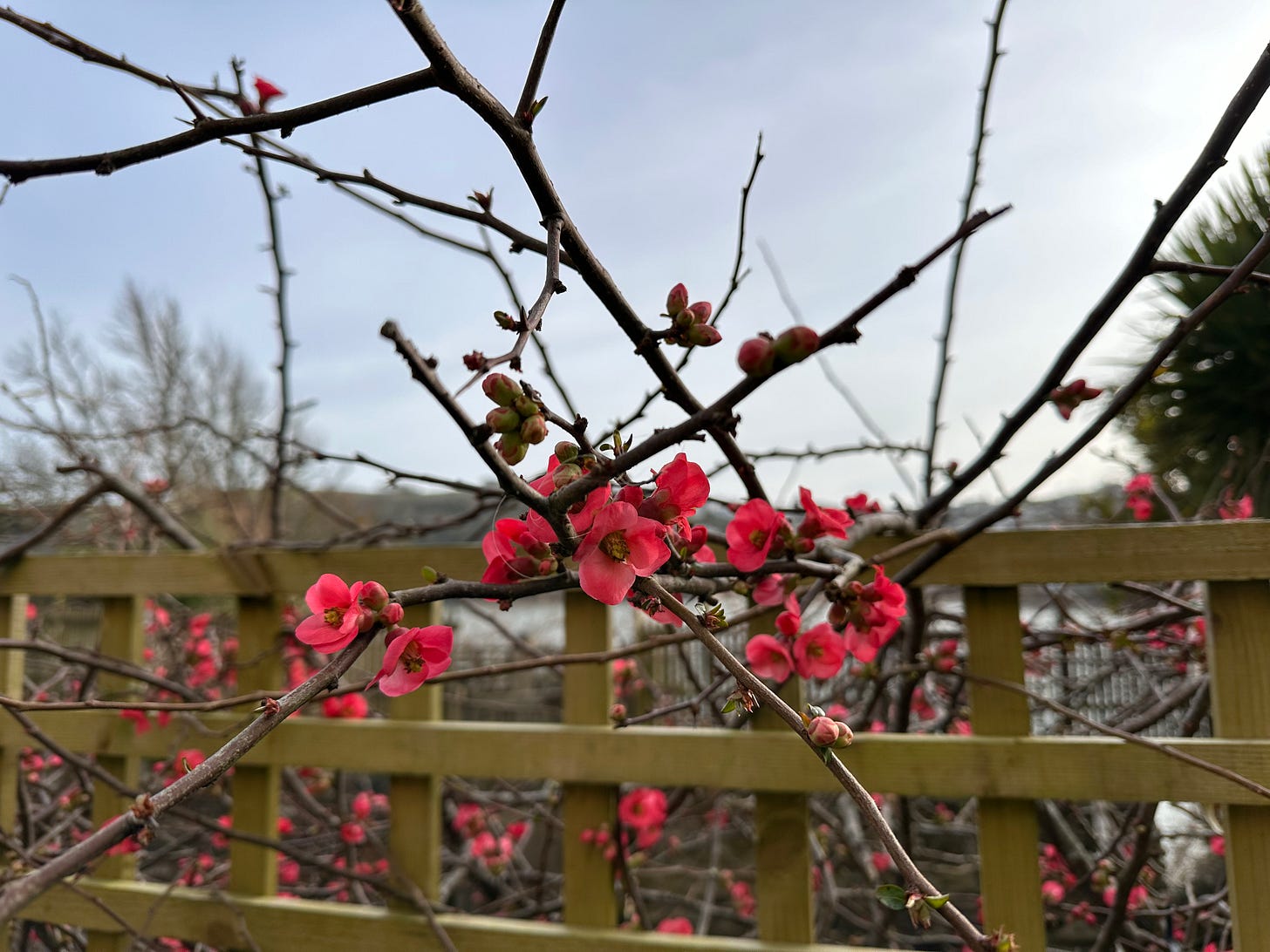Hello Creative Souls,
Welcome to my ‘end of January’ newsletter. January is the month that gets labelled as the time of year for the ‘winter blues’. I can’t dispute this term, having suffered with the January and February blues for many years. However, this year I decided to embrace the winter season as much as I possibly could and to not wish away the precious days of winter. Instead I wanted to seize the opportunities given to us by the winter season and use the time to enjoy the month of January as much as possible. I have managed to get outside in all weathers and have particularly enjoyed some time on the beach. I have loved exploring the beach and strandlines, especially after the storms we have experienced in the UK this winter. My motivation for getting out and about was to sketch and paint outside, I didn’t want to let January pass by without taking my sketchbook out with me, although many of you that follow me, will already know that I found it too cold to paint, however, I did manage to get the rough sketches down. Read on to discover what exciting things I found whilst exploring the tidelines on the rocky shores of the Cornish coast.

Winter beach walks are good for health & mental well-being…
There is nothing like a cold and blustery walk along the coast to blow away the winter blues. I find that walking along the beach lifts my mood. The coast being much quieter during the winter, a place where I can find solitude to walk, to ponder and to explore the tideline. A simple pleasure to pass the time, looking for a wealth of treasures that have been deposited by the stormy seas. I love being wrapped up in my big coat, hat and gloves, feeling the cold wind whipping around my face, listening to the waves crashing against the rocks, feeling small and in my place. I am no match for Mother Nature, staying well back from the breaking waves.



Sketchbook Observations…
After the storm I really took the time to stop and stare, taking in the landscape and the natural environment. The colours all around me, muted, as if the vibrancy dial has been turned down. The clouds, changing before my eyes as the rain came in from the sea. The sea changing from almost black to a deep bottle green and then a blue-grey. The dark rocks with white frothy wave breaks surrounding them and then the distant hills, dark greens, umbers and browns with distant black naked trees and hedge lines. A seaside palette of wintry hues to be remembered and used on the page later in the studio.
As I wandered slowly along the silvery beach I could see masses of tangled seaweeds strewn on the sand. As I scour the strandline I start to see pieces of driftwood, limpet shells and my most favourite treasure - sea glass.
Strandline Treasure…
I love finding sea glass, I wonder about its age and where it came from. I think about how the sea has tossed it around in the waves for so long that the edges run smooth, the glass turned opaque and frosty. As a child I wanted to find a message in a bottle or be the one to send a message in a bottle, having read a snippet in my Simple Things magazine, I looked up a fairly recent find in Western Australia in 2018. See an excerpt from The Guardian newspaper below:
The world’s oldest message in a bottle has been found on a beach in Western Australia by a couple who thought it might “look good on a bookshelf”.
Tonya Illman found the 132-year-old gin bottle in the dunes near Wedge Island in January. Her husband, Kym Illman, told Guardian Australia she initially thought it was rubbish but picked it up because it had distinct, raised lettering and would be at home on their bookshelf.
Inside, she found a roll of paper printed in German and dated to 12 June 1886, which was authenticated by the Western Australian Museum. 1

A truly fascinating find and over 132 years old. My treasures weren’t quite as exciting as a message in bottle, but they did bring me so much joy, so read on and I will share with you what I found:
Flat Faced Periwinkles - I have only ever found these coloured shells on a rocky beach in the south of Cornwall. I have found them in a variety of colours, from bright yellow, to peachy oranges and browns. These brightly coloured little shells really stand out on the shingly beach. According the the Wildlife Trust, Periwinkles are able seal themselves into their shell by closing the 'door' - a round operculum. Flat periwinkles can breed throughout the year and have both male and female forms. Eggs are internally fertilised and laid on seaweed in masses of up to 280 eggs.2
A Pinky Coloured Scallop Shell - my husband found the shell in amongst the seaweed and I was so happy. The scallop shell is associated with St James and is the symbol of the Camino de Santiago. The shell is the shape of the setting sun and for me, it reminds me of mermaids, sitting on the rocks and having a drink from the shell.
Cuttlefish Bones - I remember as a child that my grandmother had a budgerigar. The cuttlefish bone was wedged in the bars of the cage for the budgies to chew on, providing them with a good source of calcium.
Common cuttlefish are the largest found in UK seas and a fierce predator. They make light work of crabs, fish and even small cuttlefish! They live in water up to 200 metres deep, but come to shallow waters to breed in spring. Their eggs are dyed black with cuttlefish ink, which gives them the appearance of grapes – giving them their name ‘sea grapes’. Cuttlefish usually live for two years and die after they have bred.3
Crab Shells & Crab Claws - Empty shells, eaten by the seabirds. The shore crab is the most common crab encountered on our shores. Normally a green-ish colour, although the shells I found were orangey brown. Shore crabs are easily found in rockpools or on the end of crab lines dangled into shallow waters. They aren't exactly picky eaters and will feast on anything and everything they come across, including seaweed, mussels, barnacles and even smaller crabs. If you spot a crab with an orange mass on its stomach, don't be alarmed, they are eggs! Females carry the fertilised eggs with them to protect them from predators. A female with eggs is known as "berried". Although a native species here, the shore crab has become an invasive species in many other parts of the world, including Australia, South Africa and California.4
Mermaid’s Purse - I have saved the best til last because I was absolutely delighted to find this funny looking pod. They may not look like much, but these dried-out leathery pouches are actually the used egg cases of sharks and skates, created to develop and protect their babies. Around 43% of all Chondrichthyes species (cartilaginous fish including sharks, rays, skates and chimaeras) give birth to their offspring in these purses. Between them they produce a diverse array of different types, sizes and colours, that eventually wash up on our beaches when they’ve been emptied.5




Naturally curious along the coast…
Getting out and exploring the coast after a winter storm was exhilarating, any worries or concerns were washed away, even if it was just for a couple of hours. Exploring and finding tidal treasures inspired me to find out more about the creatures that inhabited the shells and pods, which gave me new material to draw and paint in my sketchbook. If you want to see my artwork then don’t forget to check out my Youtube channel where your likes and comments really help my channel to grow and at the same time makes me very happy.
I feel grateful to have been able to embrace this winter and all its seasonal traditions, I have managed to slow down, to enjoy a little bit of hibernation and self care. I feel recharged and ready for the spring, Imbolc is just around the corner and when I walk with my doggy companion I am spotting all the signs. Little shoots of hope are popping up along the verges, the trees have buds and I have spotted snowdrops, daffodils and even some brightly coloured Maule’s quince blossom. The birds are busy every morning on the bird feeders and extremely chatty, going about their business in preparation for building their nests.
I hope you have found time for yourself this winter, we sometimes forget to be kind to ourselves, but as a good friend once said to me “you can’t pour from an empty cup.” Let me know in the comments how you’ve embraced this season and made sure your cup is always full. I would love to hear what you have been up to.
Thank you for taking some time out of your day to read my post, your support is always appreciated.
Stay naturally curious, until the next time dear reader.
Clare 💜
https://www.theguardian.com/australia-news/2018/mar/06/worlds-oldest-message-bottle-western-australia-wedge-island
https://www.wildlifetrusts.org/wildlife-explorer/marine/sea-snails-and-sea-slugs/flat-periwinkle
https://www.wildlifetrusts.org/wildlife-explorer/marine/squids-octopuses-and-cuttlefish/common-cuttlefish
https://www.wildlifetrusts.org/wildlife-explorer/marine/crustaceans/shore-crab
Marine Madness -
https://marinemadnessdotblog.wordpress.com/2020/04/13/a-beachcombers-guide-to-finding-and-identify-a-mermaids-purse/







“The colours all around me, muted, as if the vibrancy dial has been turned down.”
That was my favourite part, Clare. What a great and clever way to describe it.
This brings back so many fond memories. Audrey supporting the cause on the amazing discoveries.